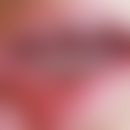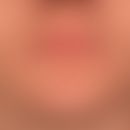HistoryThis section has been translated automatically.
General informationsThis section has been translated automatically.
Human pathogenic, anthropophilic dermatophyte with a particular affinity for hair. Formerly particularly widespread as the causative agent of "Tinea corporis gladiatorum" in martial arts and fitness sports.
You might also be interested in
Occurrence/EpidemiologyThis section has been translated automatically.
Worldwide distribution. In Europe, T tonsurans initially played a rather subordinate role as a cause of tinea capitis, while the pathogen became the main cause of tinea capitis in children in the USA, the Caribbean and later also in the UK (Abdel-Rahman SM et al. 2012; Fuller LC et al. 2014).
In wrestlers in the USA, Iran and Turkey, the prevalence of "tinea gladiatorum" varies between 2.4% and 90.62% (average 34.29%) (Kermani F et al. (2020).
In Central Europe, a decline in the previously predominant pathogens Microsporum (M) canis and M. audouinii in favor of T. tonsurans has been observed for several years. An increase in infections with T. tonsurans has been described, particularly in patients with a West African migration background, although T. tonsurans is not the predominant cause of tinea capitis in West Africa (Gits-Muselli M et al. 2017). This led to the assumption that an infection must have occurred outside the home countries.
However, it is still unclear why the overall prevalence of T tonsurans is increasing. The extent to which mutations in the pathogen have led to an increase in virulence is disputed (Gits-Muselli M et al. 2017; Gupta AK et al. 2018).
Recently, an increasing number of infections have been observed in Central Europe in which a possible transmission of Trichophyton tonsurans through contaminated hair clippers is likely (after barbershop visits). Shaving, with its high potential for microtrauma, could serve as an entry point for the pathogen and lead to an increased incidence of tinea capitis or barbae with contaminated equipment. The involvement of health authorities is necessary to uncover chains of infection (Nenoff P et al. 2024).
ManifestationThis section has been translated automatically.
ClinicThis section has been translated automatically.
See below Tinea, Tinea corporis, Tinea capitis, Tinea capitis superficialis, Tinea barbae, Tinea unguium. Mostly solitary, reddened, inflammatory, finely scaling plaques on the trunk, extremities, nails or capillitium. Infestation of the hair on the head including the hair shaft (endothrix infection). The hair usually breaks off above the skin level.
In a larger study, the average age of Trichophyton tonsurans infections was 20.1 years (±3.1), with men (98.2 %) being in the majority. Tinea capitis T. tonsurans occurred predominantly in the occipital region (87.6 %). In 78.9 % of cases, the scalp manifestation was non-inflammatory (scaly plaques and papules: 76.1 % and seborrheic manifestations: 2.8 %). 21.1 % of cases showed inflammatory tinea capitis (21.1 %; kerion: 10.1 % and pustular: 11 %).
Simultaneous involvement of areas other than the scalp was common: tinea corporis was observed in 38.7 % of cases; tinea faciei and barbae in 24.3 %; nape and anterior neck in 76.6 % and 2.7 % of cases, respectively (Galili E et al. 2023).
MicroscopyThis section has been translated automatically.
Macroconidia: Rare, plump, pleomorphic, colorless, smooth-walled, 2-6 chambers.
Microconidia: Numerous; especially localized in the marginal zone, multiform, predominantly elongate to pyriform, length: 3-10 μm, width: 1.5-5 μm, stalked bases on the hyphae, mostly arranged botrytis-like on the hyphae.
Chlamydospores: Very numerous; localized especially in the middle part of the thallus, clustered loose arrangement, rarely rocket hyphae or spiral hyphae.
TherapyThis section has been translated automatically.
Once the diagnosis of tinea capitis/barbae has been confirmed, oral antifungal therapy with terbinafine 250 mg or weight-adapted terbinafine 125 mg once daily for at least 28 days should be initiatedb. Supportive local therapy with a solution containing ciclopiroxolamine, cream and/or shampoo is advisable.
Terbinafine was used in view of the fact that no systemic antifungal therapy is approved for children in Germany. The parents were informed in detail about the use and side effects of the therapy. Two patients with a poor response to terbinafine were then treated with itraconazole 100 mg for 3 days and then once a week.
All patients should be informed about hygiene measures for infection prophylaxis (e.g. one-time use of towels, disinfection of frequently used brushes).
Additional systemic antibiotics with either ampicillin/sulbactam or clindamycin are recommended in the event of a complicating bacterial overlay.
Note(s)This section has been translated automatically.
In Europe, T tonsurans initially played a rather subordinate role as a cause of tinea capitis, while the pathogen became the main cause of tinea capitis in children in the USA, the Caribbean and later also in the UK (Abdel-Rahman SM et al. (2012) The prevalence of infections with Trichophyton tonsurans in schoolchildren: the CAPITIS study. Pediatrics 125: 966-973; Fuller LC et al. (2014) British Association of Dermatologists' guidelines for the management of tinea capitis 2014. Br J Dermatol171: 454-463.
Known and analyzed type I allergens in Trichophyton tonsurans
- Tri t 1
- Tri t 4 Serine protease
LiteratureThis section has been translated automatically.
- Abdel-Rahman SM et al. (2012) The prevalence of infections with Trichophyton tonsurans in schoolchildren: the CAPITIS study. Pediatrics 125: 966-973.
- Adams BB (2002) Tinea corporis gladiatorum. J Am Acad Dermatol 47: 286-290
- Altindis M (2003) Prevalence of tinea capitis in primary schools in Turkey. Mycoses 46: 218-221
- Fuller LC et al. (2014) British Association of Dermatologists' guidelines for the management of tinea capitis 2014. Br J Dermatol171: 454-463.
- Galili E et al. (2023) Tinea capitis caused by Trichophyton tonsurans among adults: Clinical characteristics and treatment response. Mycoses 66:144-149.
- Gits-Muselli M et al. (2017) Continuous increase of Trichophyton tonsurans as a cause of tinea capitis in the urban area of Paris, France: a 5-year-long study. Med Mycol 55: 476-484.
- Gupta AK et al. (2018) Tinea capitis in children: a systematic review of management. J Eur Acad Dermatol Venereol 32: 2264-2274.
- Kermani F et al. (2020) Tinea gladiatorum and dermatophyte contamination among wrestlers and in wrestling halls: a systematic review and meta-analysis. Curr Microbiol 77: 602-611.
- Kolivras A (2003) Tinea capitis in Brussels: Epidemiology and New Management Strategy. Dermatology 206: 384-387
- Mohrenschlager M et al. (2001) Tinea capitis of childhood: incidence and pathogenetic role of Trichophyton tonsurans in Central Europe. J Am Acad Dermatol 45: 320-321
- Müller VL et al. (2021) Tinea capitis et barbae caused by Trichophyton tonsurans: A retrospective cohort study of an infection chain after shavings in barber stores. Mycoses 64:428-436.
- Nenoff P. et al. (2024) Old fungi in a new guise- a challenge in diagnostics and therapy. JDDg 20-913-915
- Ravenscroft J (2000) Trichophyton tonsurans tinea capitis and tinea corporis: treatment and follow-up of four affected family members. Pediatr Dermatol 17: 407-409
- Tietz HJ (2000) Results of the first dermatomycoses quality control study in Germany. Mycoses 43: S63-S67
Outgoing links (9)
Ciclopirox olamine (inci); Onychomycosis (overview); Superficial tinea capitis; TEF gene; Terbinafine; Tinea barbae; Tinea capitis (overview); Tinea corporis; Tinea (overview);Disclaimer
Please ask your physician for a reliable diagnosis. This website is only meant as a reference.













